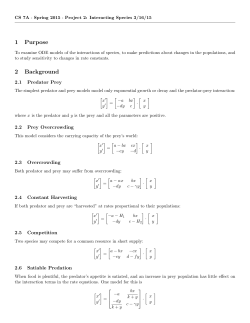
Rutherford`s Atom A Miniature Solar System
Rutherford’s Atom A Miniature Solar System Atomic Spectra Atoms exhibit sharp emission lines instead of continuous distributions. Absorption lines are at the same wavelengths as emission lines. Emission lines for hydrogen are at 1 1 = R 2 − 2 λ n f ni where n f < ni . 1 Rydberg constant: R = 1097 . × 10 7 m −1 . Lyman Series: n f = 1 Balmer Series: n f = 2 Paschen Series: n f = 3 Bohr Model of the Hydrogen Atom 1. Electrons move in circular orbits around proton under attraction of Coulomb force. ke 2 me v 2 FE = ma c gives Using . 2 = r r 2 2 ke ke ke Which means PE = − , KE = 21 me v 2 = ,E = − . 2r 2r r 2 2. Radiation is emitted when an electron jumps to a lower energy orbit, E i − E f = hf = hc / λ . 3. Only certain orbits (radii) are stable, L = me vr = nh / 2π . This implies that where ke 2 E= − 2 2n a 0 and r = n a0 2 h2 − 11 a0 = = . × m = 0.0529nm . 5 29 10 2 2 4π me ke This would also work for the atoms other than hydrogen if we assume the electrons don’t affect each other. Angular Momentum is quantized: Ln = me vr = nh / 2π Radii if orbits are quantized: rn = a 0 n 2 / Z ke 2 Z 2 Energy Levels are quantized: E n = − 2a 0 n 2 2 Z E n = − (2.18 × 10 −18 J ) 2 n Z2 E n = − (13.6eV ) 2 n If electrons are waves, orbits are only stable if they result in constructive interference. Since they can travel either direction, they must produce standing waves. 2πr = nλ = nh / m e v m e vr = nh / 2π X-rays
© Copyright 2025
















